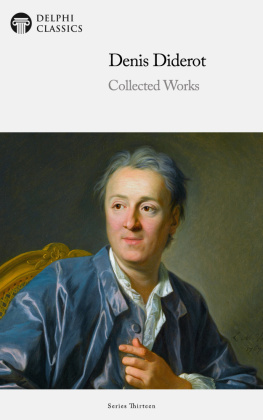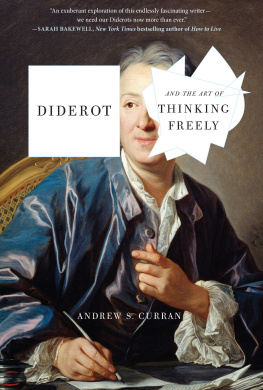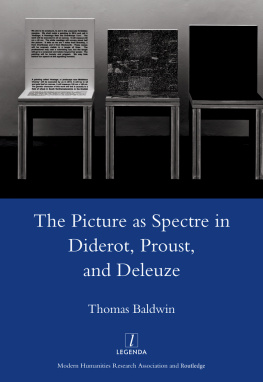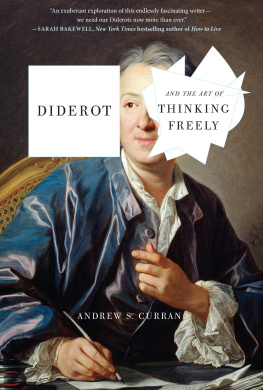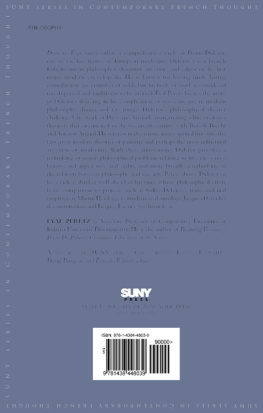
The Collected Works of
DENIS DIDEROT
(1713-1784)

Contents

Delphi Classics 2022
Version 1


Browse our Main Series

Browse ou r Ancient Classics

Browse our Poets

Brow se our Art eBooks

Browse our Classical M usic series

The Collected Works of
DENIS DIDEROT

By Delphi Classics, 2022
COPYRIGHT
Collected Works of Denis Diderot

First published in the United Kingdom in 2022 by Delphi Classics.
Delphi Classics, 2022.
The translations by Mitchell Abidor, 2005, produced for marxists.org , appear in this collection by the kind permission of the author.
All rights reserved. No part of this publication may be reproduced, stored in a retrieval system, or transmitted, in any form or by any means, without the prior permission in writing of the publisher, nor be otherwise circulated in any form other than that in which it is published.
ISBN: 978 1 80170 089 4
Delphi Classics
is an imprint of
Delphi Publishing Ltd
Hastings, East Sussex
United Kingdom
Contact: sales@delphiclassics.com

www.delphiclassics.com

Explore Philosophy at Delphi Clas sics

The Novels

Langres, Champagne, in the region of Grand Est, France Denis Diderots birthplace

9 de la place, Langres the birthplace (pictured to the right)

Statue of Diderot in Langres
The Indiscreet Toys (1748)

Anonymous translation, 1749
Original French Title: Les Bijoux indiscrets
The French philosopher, art critic and writer, best known for serving as co-founder, chief editor, and contributor to the Encyclopdie , Denis Diderot was a prominent figure of the Age of Enlightenment. He initially studied philosophy at a Jesuit college, then considered working in the church clergy, before briefly studying law. In 1734 he decided to become a writer, which resulted in his father disowning him. For the next ten years, he enjoyed a bohemian lifestyle, when he wrote many of his best-known works in both fiction and non-fiction, including the anonymously published novel Les Bijoux indiscrets (1748).
At the time, Diderot desperately needed to raise funds on short notice. He had become a father through his wife, while his mistress Mme. de Puisieux was making financial demands from him. Diderot had stated to his mistress that writing a novel was a trivial task, whereupon she challenged him to write a novel. Les Bijoux indiscrets was his response. It is largely inspired by the style of Le Sopha, conte moral (1742), a libertine novel by Claude Prosper Jolyot de Crbillon. That story concerns a young courtier, Amanz, whose soul in a previous life was condemned by Brahma to inhabit a series of sofas, and not to be reincarnated in a human body until two virgin lovers had consummated their passion upon the sofa he inhabited. The novel is structured as a frame story in an oriental setting, explicitly evocative of the Arabian Nights , in which Amanz recounts the adventures of seven couples, which he witnessed in his sofa form, to the bored sultan Shah Baham (grandson of Shehryr and Scheherazade).
Les Bijoux indiscrets serves as an allegory that portrays Louis XV of France as Mangogul, Sultan of Congo, who owns a magic ring that makes womens vaginas (toys or jewels) talk. The character of Mirzoza represents Louis XVs mistress Madame de Pompadour. In total, the ring is pointed at thirty different women in the narrative usually at a dinner or a social meeting with the Sultan typically being visible to the woman. However, as the ring has the additional property of making its owner invisible when required, a few of the sexual experiences recounted are through direct observation with the Sultan making himself invisible and placing his person in the unsuspecting womans boudoir.
Diderot actually portrays Pompadour in a flattering light, most likely to ensure her support for the publication of his groundbreaking Encyclopdie project. Besides the inevitable bawdiness of the novel, there are several digressions into philosophy, music and literature. In one famous philosophical digression, the Sultan has a dream in which he sees a child named Experiment growing bigger and stronger till it demolishes an ancient temple named Hypothesis. The book proved to be lucrative for Diderot, even though it could only be sold clandestinely. Today, it is Diderots most published work.

Portrait of Louis XV by Louis-Michel van Loo, c.1763

Portrait of Madame de Pompadour by Charles-Andr van Loo, c.1755 Jeanne Poisson was a member of the French court and the official chief mistress of King Louis XV from 1745 to 1751; she remained influential as court favourite until her death.
Next page
